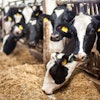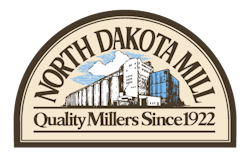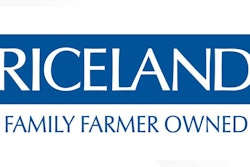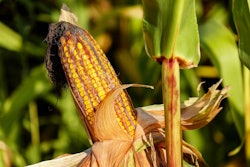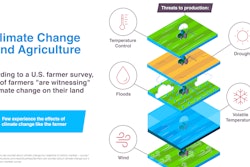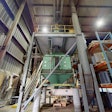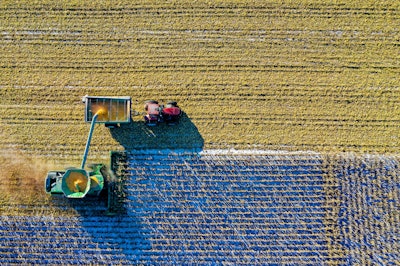
CoBank Knowledge Exchangehas released itsThe Year Ahead: Forces That Will Shape the U.S. Rural Economy in 2022report.
According to the report, the U.S. economy is poised to slow in 2022 relative to 2021, but economic growth will continue at a pace that is well above average.
Consumers have powered the economic recovery since mid-2020 and that will continue in the coming year. Consumer spending is expected to rise another 4% to 5% in 2022 and GDP is expected to grow by roughly 4.5%.
The report examines several key factors that will shape agriculture and market sectors that serve rural communities throughout the U.S.
Global Economy: Fragile Growth
If the global economy is to perform well in 2022, it will do so despite three significant headwinds: a persistent pandemic, monetary tightening in the U.S. and slowing growth in China.
As we enter the third year of the pandemic, the COVID-19 virus is still in control of the world economy, and it will likely remain so through much of the first half of the year.
The ongoing threat of virus mutations that could evade vaccines will keep economic uncertainty unusually high. Nevertheless, strong consumer demand throughout much of the developed world will keep the economy humming.
U.S. Economy: Labor and Supply Chains to Improve, Inflation Might Not
The pandemic has significantly altered how our economy functions, with the greatest impact coming from what we consume. Through October 2021, Americans spent 18% more on goods and about 1% less on services than they did in 2019.
Compounded by a labor shortage, it is easy to see why supply chains have become one of the biggest economic challenges of the pandemic — demand has significantly exceeded the capacity of our existing system.
Fortunately, we have likely experienced the worst of the bottlenecks, which should diminish in the coming year. For most consumers and businesses, a key focus in 2022 will be tackling the effects of inflation.
Operating and input costs will remain high for businesses in early 2022, and they will continue to look for ways to pass on those costs to consumers.
Monetary Policy: Tough Fed Decisions Approaching
明年可能将一些最challenging monetary decisions that the Federal Reserve has faced in over a decade.
CoBank expects the Fed to first raise interest rates in late summer or early fall 2022. Of course, this decision will be dependent on virus impacts that none of us can now predict, so financial markets will function amidst a high level of monetary uncertainty in the first half of 2022.
One thing the market will expect from the Fed in coming months is more clarity on its approach to inflation.
U.S. Government: Spending, Partisan Control
As the nation looks ahead to a new year, the federal policy machinery is very focused on a few key factors that will impact the ability of the administration to lead and Congress to legislate.
Both the House and Senate agriculture committees plan oversight hearings in 2022 to begin the farm bill planning for 2023. While that is important and timely work, the widely expected change in partisan control of Congress following the 2022 elections may render much of that work perfunctory. Legislative expectations should be modest for 2022.
U.S. Farm Economy: Increased Costs, Trade Battle with China
The U.S. farm economy will continue to struggle with the ongoing supply chain dysfunction and cost inflation issues that emerged in the summer of 2021.
Historically strong prices will be more than offset by increases in cost structure for nearly all crop production including row crops, fruits and vegetables, and hay.
CoBank economists do not anticipate any significant pullback in farm-level costs until Q3, at the earliest. The expected decline in direct government payments in 2022 will further squeeze farm income statements.
The single biggest wildcard for U.S. agriculture is export sales to China, currently the largest export market for U.S. farm products.
Specialty Crops: Squeezed by Labor, Drought and Transportation
Rising labor and transportation costs, compounded by ongoing drought and water restrictions in the Western U.S., will dominate the specialty crops sector in 2022. Agricultural labor has not been immune to the “Great Resignation” resulting from the pandemic.
U.S. fruit and vegetable acreage will continue to shift toward mechanically harvested crops that require less manual labor. Prices of fruits, nuts and vegetables will be driven higher by smaller harvests caused by ongoing drought conditions in the Western U.S.
Grain, Farm Supply and Biofuels: Inflation, Volatility Create Mixed Outlook
The grain, farm supply and biofuels sectors enter 2022 facing a mixture of inflationary headwinds, supply chain bottlenecks and high-energy prices that present challenges but also a few opportunities.
CoBank economists view the short-term outlook as mixed for grain, challenging for farm supply and positive for biofuels. Biofuels enter 2022 with considerable momentum as the fuel ethanol complex is revving on all cylinders driven by strong consumer demand and higher gasoline and fuel ethanol prices.
Beyond ethanol, 2022 should see the continued build-out of soybean crushing and soy oil refining capacity to support the expected growth in renewable diesel.
Animal Protein: Lean Supplies, Strong Demand Bolster Prices Despite Export Unknowns
The Bureau of Labor and Statistics’ Consumer Price Index for all meats, poultry, fish, and eggs hit an all-time high in October, up 12% year-over-year. As restaurant and grocery prices adjust, consumer-level meat inflation is likely to continue well into the new year.
While higher retail prices could limit consumption growth, tighter cattle supplies, ongoing broiler breeder issues and sow herd reductions should support favorable processor margins through at least the first half of 2022.
Although beef exports have been robust during the second half of 2021, the collective U.S. protein opportunity to China may have already peaked.
Dairy: Producer Margins to Improve, but Logistics Hinder Exports
Milk supplies in the U.S. and around the world will tighten in 2022 as dairy farmers reduce herd sizes in response to cost inflation pressures. The cross current of resilient domestic and global demand for dairy products with the slowing growth in milk supplies will give an upward lift to milk prices in 2022.
Combined with softer feed costs following big corn and soybean harvests, producer margins will finally improve. However, high costs for labor, construction, and freight will limit upside margin potential and dampen milk production growth. For dairy processors, tighter availability of milk will mean some processors get squeezed.
Rural Infrastructure: Managing on the Grid-Edge
As electricity consumers’ requirements rapidly change and redefine the relationship between buyers and sellers, all eyes will be on grid-edge technologies. These consumer-accessible resources have already been disrupting the century-old, one-way flow of power from suppliers.
The challenge with grid-edge technologies is they create a two-way flow between suppliers and consumers and disrupt the predictable amount of demand that consumers might require.
Electric cooperatives have a proven track record of agility and are possibly better positioned to work with consumers to beneficially manage the proliferation of grid-edge technology.
Rural Communications: Cable Market Competition Heats Up
With bipartisan support to bridge the digital divide, the government funding flood gates are expected to open in 2022.
The Infrastructure Investment and Jobs Act includes $65 billion in broadband funding, of which $42.5 billion will be allocated to the states to build networks in unserved and underserved areas.
Cable operators have enjoyed robust broadband subscriber growth over the last several years due to consumer trends and limited competition from the telecommunication companies, but competition should start to heat up in 2022.
Read the full reporthere.


